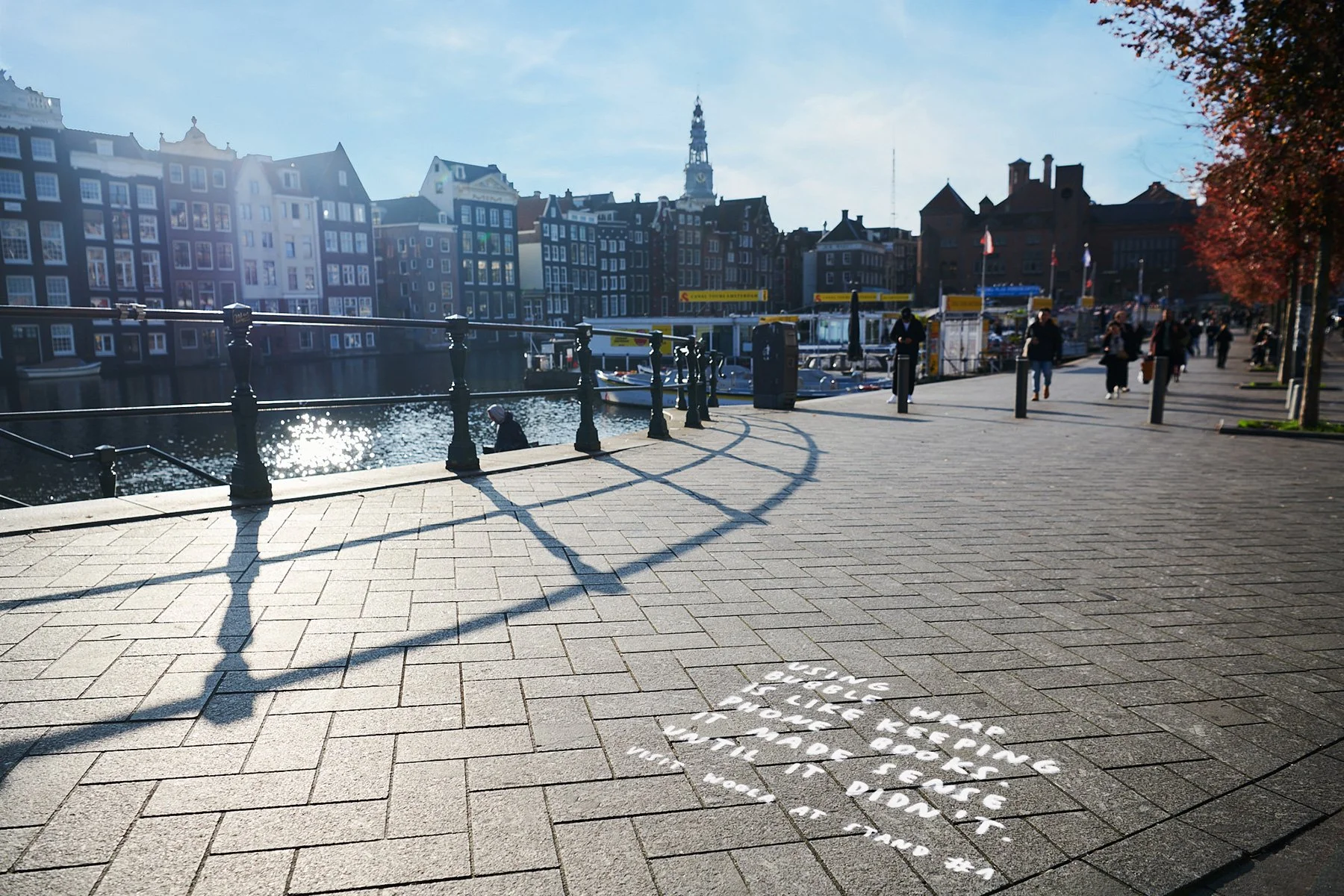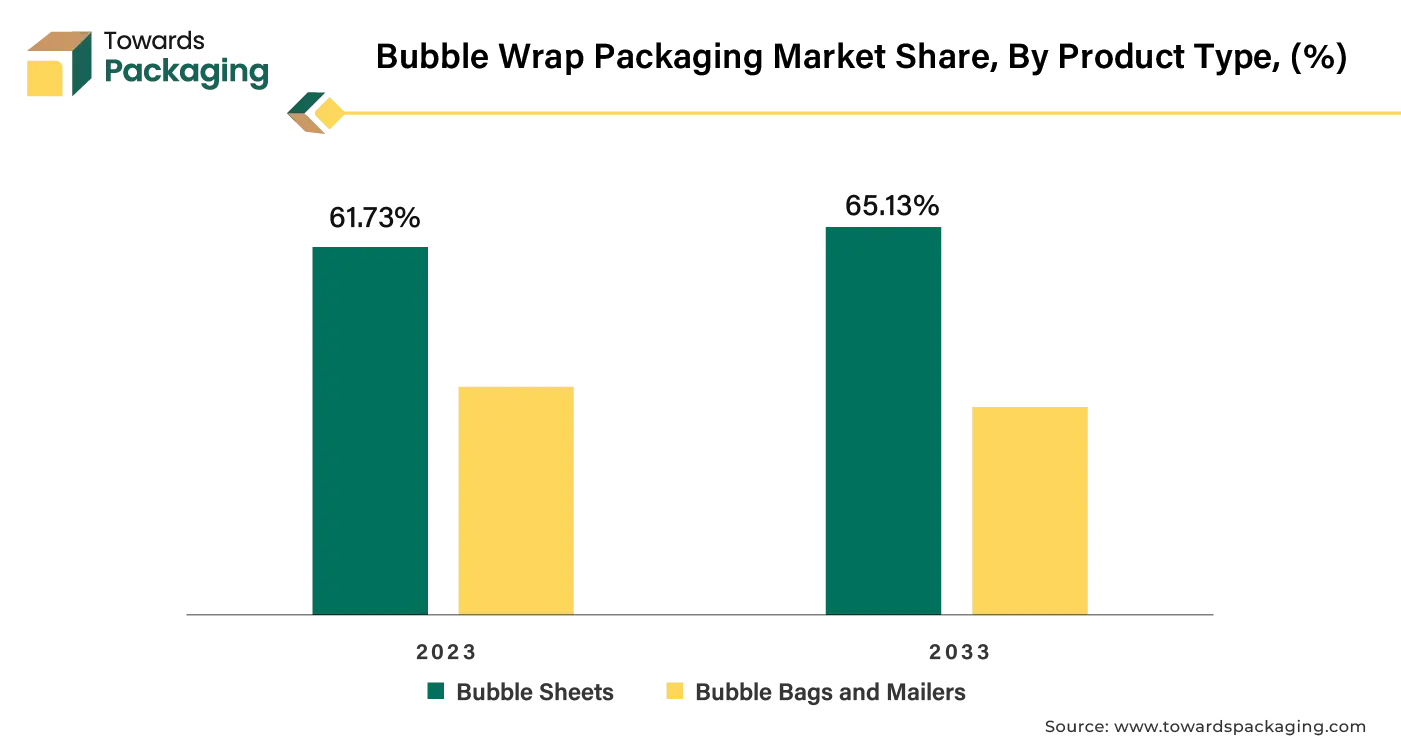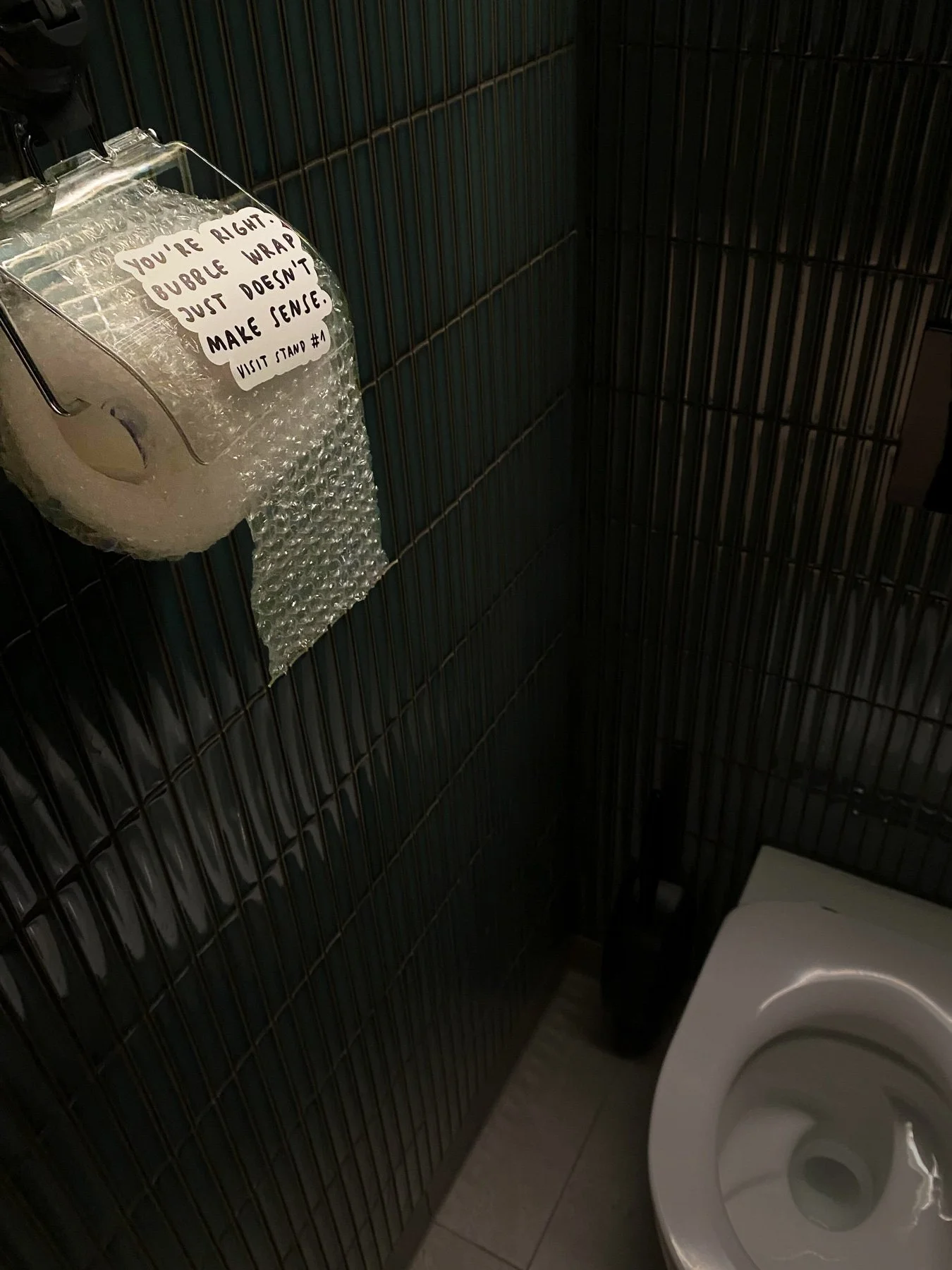40+ Bubble wrap statistics showing packaging market trends
Bubble wrap is a popular packaging material because it’s cheap to manufacture in large quantities and provides protective cushioning for almost any kind of product.
The multi-billion dollar bubble wrap industry plays a crucial role in global logistics and ecommerce. Almost every item that must be shipped gets placed in this protective plastic film with trapped air bubbles.
At Woola, we’re working towards replacing bubble wrap with biodegradable waste wool packaging. Learn more about our Bubble Wool and Wool Envelopes.
Global bubble wrap market overview
The global bubble wrap industry was valued at $3.54 billion in 2024, reflecting steady demand across ecommerce, electronics, and retail sectors.¹
The market is projected to grow to $5 billion by 2034, driven by the rise in online shopping and international shipping.¹
The bubble wrap market is expected to expand between 2025 and 2034 at a Compound Annual Growth Rate (CAGR) of 3.52%.¹
Bubble sheets accounted for the largest share of the bubble wrap packaging market in 2023, holding 61.73%, and their dominance is projected to increase to 65.13% by 2033, reflecting a growing preference for this product type across industries.²
The ecommerce sector remains the largest end-user of bubble wrap, with increasing reliance on protective packaging for last-mile delivery.²
Low-density polyethylene (LDPE) makes up about 68.4% of total material usage in bubble wrap production.³
Asia-Pacific leads the global market, driven by strong manufacturing output and expanding retail logistics.¹
North America held over 25% of 2023’s global bubble wrap market, supported by a mature packaging industry and high online sales.⁴
The European Union’s packaging waste regulation targets a 5% reduction by 2030, rising to 10% by 2035 and 15% by 2040, pushing companies to explore recyclable alternatives.⁵
Demand for thermal-insulated bubble wrap is projected to grow from $11.2 billion to $17.5 billion between 2024 and 2032, fueled by pharmaceutical and perishable goods transport.⁶
The ecommerce and retail industries led bubble wrap usage in 2023, propelled by global trends in digital shopping and rapid delivery systems.⁵
Image source: Towards Packaging
Demand for bubble wrap continues to rise globally. Logistics, ecommerce, and new packaging needs are driving this.
While regions like Asia-Pacific and North America dominate production and consumption, sustainability concerns are pushing the need for innovation.
The industry's future lies in balancing functionality, cost efficiency, and environmental responsibility.
Global bubble wrap market segmentation
Image source: Towards Packaging
The bubble wrap packaging market is multi-layered, split by product types, end-use industries, distribution channels, and geographic regions.
Understanding these segments will help you uncover market dynamics, consumer preferences, and growth opportunities.
Bubble sheets were the largest product type segment in 2024 with a market value of $3.29 billion, and are projected to reach $4.47 billion by 2032 (3.9% CAGR).⁷
The bubble bags segment is expected to grow at the fastest rate during the forecast period, driven by innovations such as self-sealing strips that improve protection and reduce shipping costs.²
The logistics and transportation industry held almost 35% of the bubble wrap market share in 2024, the largest end-use market share due to the increasing global trade of fragile items and the need for effective transit protection.⁷
The pharmaceutical industry is projected to be the fastest-growing end-use segment, driven by the rising need to protect sensitive medical items like vials and ampoules during shipping.⁷
In terms of distribution, direct sales accounted for the largest share in 2024, as bulk buyers such as pharmaceutical and logistics companies prefer consistent, large-scale product supply.⁷
Online sales channels are expected to grow at the highest CAGR, supported by greater reach and the growing preference for convenient ordering systems.⁷
In 2024, Asia-Pacific held the leading regional share with 39.6%, valued at $1.30 billion, and is forecasted to grow to $1.67 billion by 2032.⁷
North America is expected to experience strong market expansion, driven by technological advancements and the continued dominance of ecommerce businesses.²
Europe is projected to grow at a CAGR of 4.8%, despite strict environmental regulations and increasing adoption of biodegradable packaging materials giving the bubble wrap market some headwinds.⁷
Low-density polyethylene (LDPE) continues to be the dominant material in bubble wrap production, making up approximately 68.4% of the total market, due to its flexibility and effective cushioning properties.³
Image source: Precedence Research
Bubble wrap is still a popular packaging solution, with key drivers for its growth being ecommerce and new innovations in product design.
Even more, its diverse shapes and sizes support segmentation across product types, end-use industries, distribution channels, and regions.
Global environmental impact of bubble wrap
While effective for protecting goods during transit, bubble wrap poses significant environmental challenges. Its production, usage, and disposal contribute to plastic pollution, greenhouse gas (GHG) emissions, and waste management issues.
This section presents key statistics highlighting the environmental impact of bubble wrap packaging:
91% of plastic-based packaging, including bubble wrap, ends up in landfills, oceans, and other ecosystems, contributing to environmental pollution.⁸
In 2018, 4.2 million tonnes of plastic bags, sacks, and wraps were produced, with over 3 million tonnes ending up in landfills.⁸
Only 2% of film and flexible packaging materials, such as bubble wrap, are recycled each year, indicating a low recycling rate.⁸
Bubble wrap is made from low-density polyethylene (LDPE), a type of plastic that can take hundreds of years to decompose, leading to long-term negative environmental impact.⁹
The production of plastic packaging, including bubble wrap, contributes approximately 1.8 billion tonnes of carbon emissions annually.¹⁰
Around 46% of the nearly 14 million tonnes of new plastic waste that end up in oceans each year come from thin plastics like bubble wrap, cling film, and plastic polybags.¹¹
The bubble wrap manufacturing process releases harmful emissions, including carbon dioxide (CO₂) and methane (CH₄), contributing to GHG accumulation.¹²
Bubble wrap is classified as a single-use plastic, leading to significant pollution and ecological issues, including the production of microplastics.¹²
In 2018, containers and packaging made up nearly 28% of total municipal solid waste generation in the US, amounting to almost 74 million tonnes, highlighting the significant contribution of packaging materials to waste streams.¹⁴
About 46% of containers and packaging weren’t recycled in 2018.¹⁴
6.7 million tonnes of containers and packaging were combusted with energy recovery (21.5% of the total) in 2018.¹⁴
27.7 million tonnes of containers and packaging ended up in landfills, accounting for 20.9% of total landfilling, highlighting the environmental burden of packaging waste.¹⁴
| Fate of plastic packaging | Description | Share of total |
|---|---|---|
| Recycled into equivalent products | Only a small share of plastic packaging is truly "closed-loop," meaning it is turned back into the same type of product, such as a PET bottle into a new bottle. | 2% |
| Downcycled into lower-grade items | This includes packaging turned into lower-quality materials, such as plastic lumber, fibers, or park benches, which are no longer usable for food or retail packaging. | 8% |
| Incinerated (with or without energy recovery) | Burned in waste-to-energy plants or incinerators. This removes waste but contributes to emissions and material loss. | 19% |
| Landfilled | Sent to landfill sites and effectively removed from the economy. | 50% |
| Mismanaged waste (leaked into nature or dumped) | Discarded in open dumps or directly into the environment. A major source of pollution, especially in lower-income regions. | 21% |
| Metric | Value |
|---|---|
| Share of plastic-based packaging that ends up in landfills, oceans, or the environment | 91% |
| Share of ocean plastic waste originating from thin plastics (e.g. bubble wrap, cling film) | 46% |
| Share of plastic packaging that’s recycled annually | 2% |
| Share of plastic packaging that’s downcycled (turned into lower-value products) | 8% |
| Share of plastic packaging that’s either landfilled or incinerated | 90% |
| Share of plastic packaging that is recycled into equivalent-function products | 2% |
Bubble wrap may still be a standard for much of the packaging industry, but issues like its low recycling rate, long decomposition time, and contribution to GHG emissions mean serious considerations need to be made towards a more sustainable industry.
This means switching to biodegradable alternatives, improved recycling technologies, and greater consumer awareness to challenge these important environmental issues.
Bubble wrap packaging global trends & innovations
The bubble wrap packaging industry is undergoing significant transformations driven by sustainability concerns, technological advancements, and evolving consumer preferences.
Innovations are focusing on sustainable materials, smart packaging solutions, and enhanced product protection to meet the demands of modern logistics and environmental regulations.
The increased consumer demand for sustainable products is driving companies to adopt lower-impact practices, including the development of global environmental standards and certifications for packaging.¹³
The Asia-Pacific bubble wrap packaging market size surpassed $1.43 billion in 2025 and is expanding at a CAGR of 3.46% during the forecast period.²
The bubble wrap packaging market is anticipated to grow at a CAGR of 3.1% from 2024 to 2034, reaching $4.2 billion by 2034.¹⁵
The bubble wrap machine market is projected to be valued at $493 million in 2024 and rise to $712.9 million by 2034, growing at a CAGR of 3.8%.¹⁵
The global biodegradable bubble wrap packaging market size was valued at $548.62 million in 2023 and is projected to reach $691.02 million by 2030, growing at a CAGR of 3.92% during the forecast period 2024–2030.¹⁵
Image source: Precedence Research
Bubble wrap dominates the packaging industry, but the tides are shifting as more businesses look for sustainable packaging alternatives. The adoption of sustainable materials and new technologies is leading to shifts in market priorities.
Sustainability and improved product protection are becoming more important for many businesses, and these trends will shape the future of the packaging industry as a whole, setting the tone for a more environmentally responsible future.
Bubble wrap is useful, but just how reusable is it? Wool may just be the packaging material of the future.
Talk to our sales team to learn more about Woola packaging and our plans to replace bubble wrap in the near future.
Sources
- Towards Packaging — Bubble Wrap Packaging Market Disruptive Trends and Future Potential
- Precedence Research — Bubble Wrap Packaging Market Size, Share, and Trends 2025 to 2034
- Future Market Insights — Bubble Wrap Packaging Market
- Global Market Insights — Bubble Wrap Packaging Market Size - By Type, By Material, By Product Type, By End-use Industry, Analysis, Share, Growth Forecast, 2024 - 2032
- Market.US — Bubble Wrap Packaging Market Size, Share
- Credence Research — Thermal Insulated Bubble Wrap Market
- Consegic — Bubble Wrap Packaging Market Size, Share & Outlook - 2025 to 2032
- IT Recycle — Is Bubble Wrap Recyclable? Here’s What You Need to Know
- Digital Exclude — Recycling Bubble Wrap
- Wrap — Redesigning the plastics system
- Quartz — The environmental impact of bubble wrap and plastic cling
- Design Life — Bubble Wrap & Design Life-Cycle
- Baywater Packaging & Supply — How will the carbon footprint of bubble wrap production be minimized in 2023?
- Environmental Protection Agency — Containers and Packaging: Product-Specific Data
- Globe News — Demand for Bubble Wrap Packaging Soars as Businesses
- Verified Market Research — Biodegradable Bubble Wrap Packaging Market Size & Forecast







